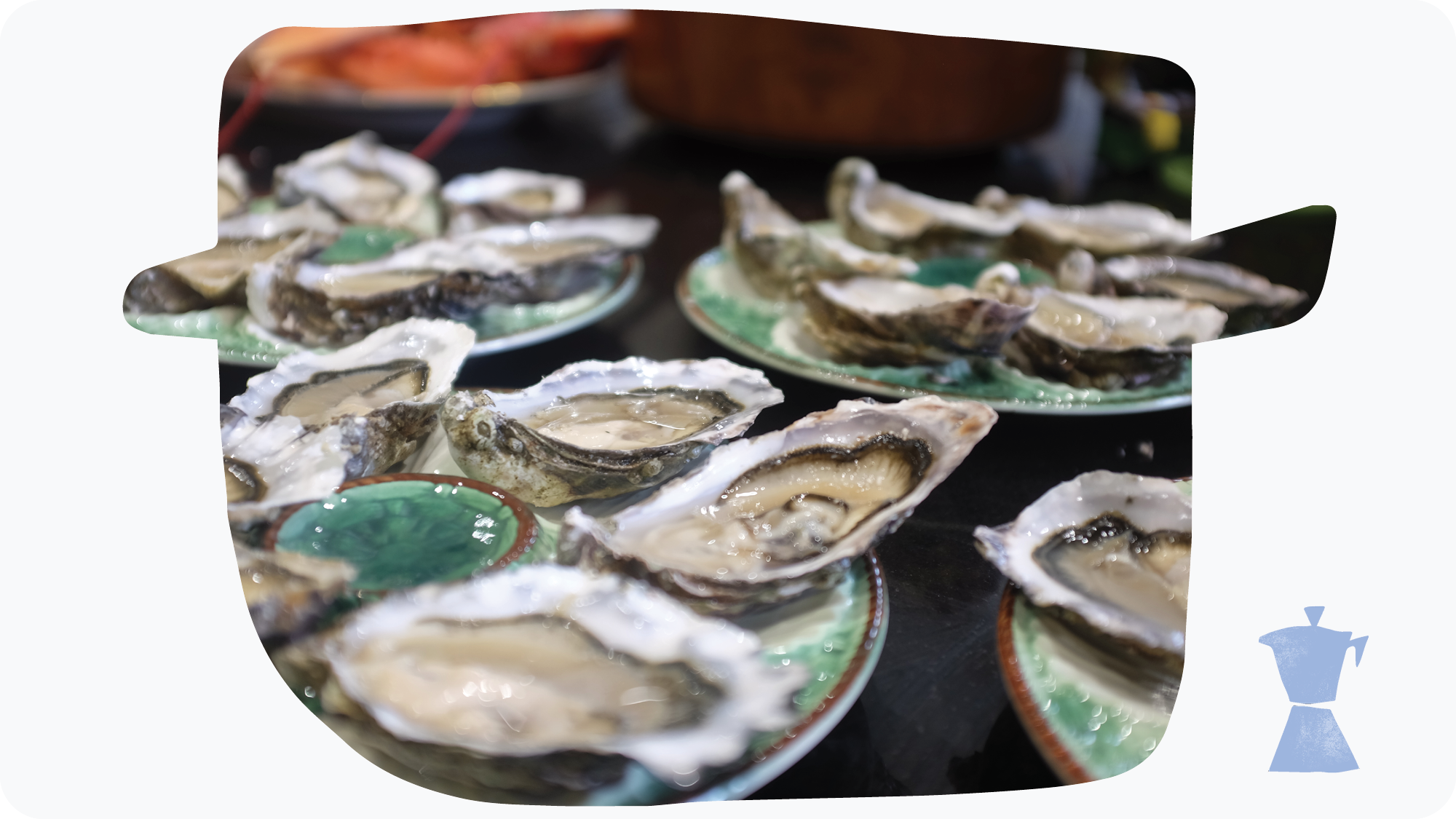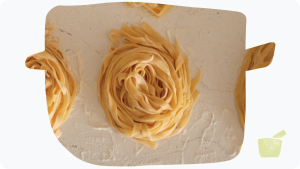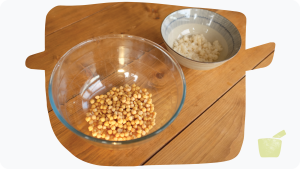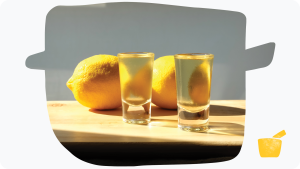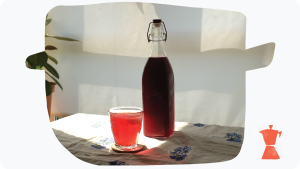A brief history of the oyster, from the Romans to the Rockerfellers – along with a few recipes to try at home.
‘O Oysters,’ said the Carpenter
‘You’ve had a pleasant run!
Shall we be trotting home again?’
But answer came there none –
And that was scarcely odd, because
They’d eaten every one.
– Lewis Carroll, The Walrus and the Carpenter
Oysters have been around for a very long time – they seem to have emerged along with the dinosaurs in the Triassic period 2,000 or so million years ago, and they have survived pretty well unchanged ever since. There are many species today, but only two which you will find on sale in markets or in restaurants in the UK: the flat “native” oyster (increasingly rare and pricey) and the larger and oval “Pacific” oyster.
It doesn’t look as if the dinosaurs ate oysters (probably couldn’t open them with those ridiculously short arms) but, in the early ocean, three-eyed marine reptiles called placodonts certainly did. Ironically these were the evolutionary ancestors of the walrus, though it’s not clear Lewis Caroll knew this. Oysters’ modern predators include starfish, sponges, limpets, seabirds, and – principally – homo sapiens.
Humans and oysters
Jonathan Swift may have proclaimed that “he was a bold man that first did eat an oyster” – but that person (whoever they were) lived aeons ago, and their true character will always remain a mystery to us. What we can say with certainty, however, is that they weren’t the only early human being who enjoyed the taste.
Although humans couldn’t prise them open until the invention of iron tools, oysters could be placed on a fire (where they would open reflexively), and huge ancient piles of oyster shells have been found along the shores of both the Americas and in Australia dating back 5,000 years or so. The oldest skeleton so far found in the British Isles is the Red Lady of Swansea Bay, laid to rest 24,000 years ago in a cliff face on the Gower; she was surrounded by oyster shells.
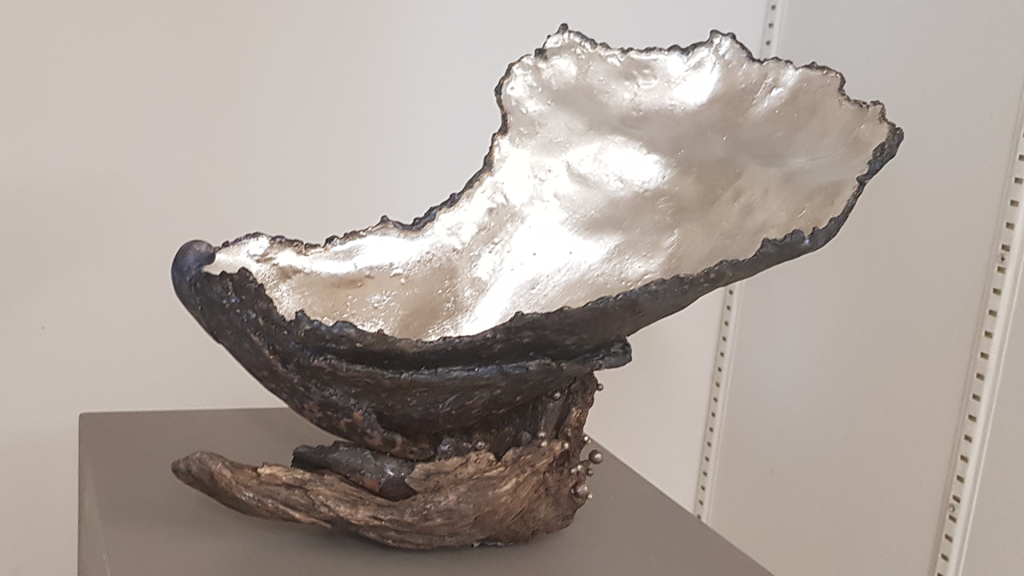
More recently (in a comparative sense) the first people to industrialise oyster production were the Romans. Pliny describes Sergius Orata as having constructed the first artificial oyster bed at Baiae Bay in 95 BCE, a technology which they subsequently imported to us in the UK in 61 CE (“What did the Romans ever do for us?” – Now you know). The motivation behind this was the insatiable demand for British food in Mediterranean villas (hard to believe, these days): Whitstable and Colchester oysters had rapidly become the ancient equivalent of today’s white truffles or caviar at Roman banquets.
The Yuk Factor
If eaten raw on the half shell, the oyster must be alive when ingested (and, if it isn’t, don’t touch it). Some people find that fact, together with seawater tang of the surrounding liquid, repellent (“snot in brine” being one description of the ensemble). But, to the true oyster snob this is the only authentic way to savour them: eating three or four first au naturel to gauge the taste and texture of the originating locality, then with a French baguette or freshly baked sourdough – with other permitted additions being lemon, tabasco and finely diced shallots in red wine vinegar.
Here is an ancient Roman accompaniment to Oysters au naturel, relayed by Drew Smith in Oyster: A World History:
“Mix [wine] vinegar, olive oil and little wine, and add in ground pepper, lovage, the yolk of an egg and liquamen [the modern equivalent would be fish sauce].”
The Romans were able to eat English oysters because they could transport them in barrels of sea water (or, in winter, snow) thus keeping them alive in transit. And so their armies (and later those of Napoleon) would carry them in their baggage trains as a ready source of protein for many hundreds of miles. The Grande Armée carried them thus all the way to Moscow.
The Sex Factor
And not only protein. A dozen Oysters amount to less than 100 calories, and while it’s true they have as much protein as 100g of prime steak, they also hold as much calcium as a large glass of milk. On top of this they contain vitamins A, B1, B2, B6, C and E – along with a sizable dose of zinc. This last nutrient may well be the reason oysters have historically been a famed aphrodisiac.
Is this merely an old wives’ tale? Well both Casanova and Messolina ate oysters in copious quantities to fuel their sexual appetites and – as the late journalist James Cameron memorably observed – it’s the sort of thing one can uniquely trust old wives to know. Plus, in 2005 research by Professor George Fisher at Barry University in Miami suggested that oysters also contain both dopamine and various amino acids which trigger increased levels of sex hormones in humans. So there may be something to it…
Oysters themselves also have an extremely unusual reproductive life – they are generally born male but after a year they transform to female and then flip genders up to four times in each annual cycle – though more than half of farmed oysters these days are sterile. This is important to remember, as in 1599 British scribe Samuel Butler advised people not to eat oysters when there is an “R” in the month, since the release of eggs and sperm during reproduction makes the flesh (particularly of native oysters) unpleasantly milky.
Then ‘twas the Roman, now ‘tis I
While Swift may have seen the consumption of one oyster as requiring immense bravery, another English literary giant certainly took the opposite view. A.E. Houseman, from whose On Wenlock Edge the above line originates, was as committed an oyster addict as they come (the poem itself has nothing to do with oysters, alas).
In January 1934 the aged Houseman wrote to a friend to clarify a question about his eating habits, saying “When you ask ‘how many meals the 52 oysters represented’ you betray some meanness of conception. They constituted the one meal of supper.” The meal in question was in celebration of New Years’ Eve, but it’s still certainly a noteworthy amount of molluscs to consume in a single sitting.
It will undoubtedly not surprise you that I find myself more in agreement with Houseman than with Swift on this one. In my years as an oyster addict, I have also learned a variety of ways to prepare them, beyond the delight of eating them raw. I want to share a few of my favourite recipes with you here (all are given for four dozen oysters, of which I hope Houseman would approve).
Oyster recipes: grilling & baking
If you can’t stomach the idea of live food, there are plenty of other ways to enjoy oysters, many of them depending on whether you also dislike the liquor. All assume 4 dozen oysters, but can be scaled down proportionally.
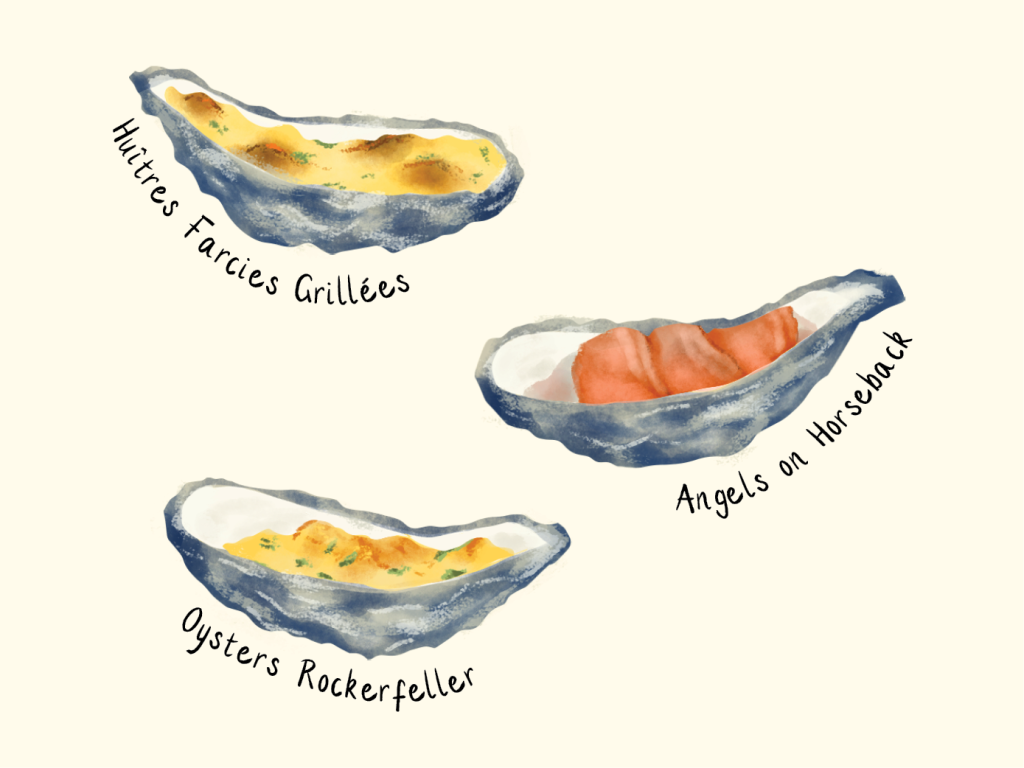
Huîtres Farcies Grillées
This is a great recipe and tends to go down particularly well with folk who are squeamish about eating oysters raw, or who have’t encountered them before. There are many variants, and you can experiment with different combinations of cheeses.
Ingredients
- 4 dozen oysters
- Small pot of double cream (about 200ml)
- 6 tablespoons grated gruyère
- 2 tablespoons grated parmesan
Method
- Mix the two grated cheeses together.
- Shuck the oysters, clean the shells and discard the liquor.
- Place one small teaspoonful of cream in each shell, then an oyster, then a covering of the cheese mix.
- Grill until the cheese starts to bubble and serve immediately.
Oysters Rockefeller
This dish famously originates from Antoine’s restaurant in New Orleans – where a customer once declared “these oysters are good enough for a Rockerfella.” Nobody knows the exact recipe, since the restaurant never published it, but it probably went something like this:
Ingredients
- 4 dozen oysters
- ½ kilo spinach or rocket (or wild garlic if available)
- 2 finely diced shallots
- 1 finely diced clove garlic
- 1 bunch parsley, chopped
- 2 rashers crispy bacon (ground)
- 100g watercress
- 200g breadcrumbs
- 1 glass white wine (optional – as an alternative to retaining the oyster liquor)
- Small glass of Pernod/Ricard
Method
- Shuck the oysters, clean the shells and put the oysters back. Retain the liquor if using.
- Sweat the rocket/spinach/wild garlic, shallots, garlic and parsley in butter for 2 minutes.
- Mix in the ground crispy bacon, watercress and breadcrumbs and cook for another 30 seconds.
- Add the leftover liquor from the oysters (or white wine if preferred).
- Cover the oysters in the mixture and grill at high heat for 30 seconds – 1 minute.
- Add a small splash of Pernod/Ricard to each oyster and serve.
Angels on Horseback
An old English recipe, typically served as a savoury course.
Ingredients
- 4 dozen oysters
- 4 dozen slices of bacon
Method
- Shuck the oysters and discard both shells and liquor.
- Wrap each oyster with a slice of bacon.
- Grill for 2-3 minutes, turning to ensure the bacon is crisp all over, and serve.
Oyster recipes: stews & soups
Like Oysters Rockefeller, several of these originate from North America (which also gave this cuisine its unique cutlery and oyster crackers).
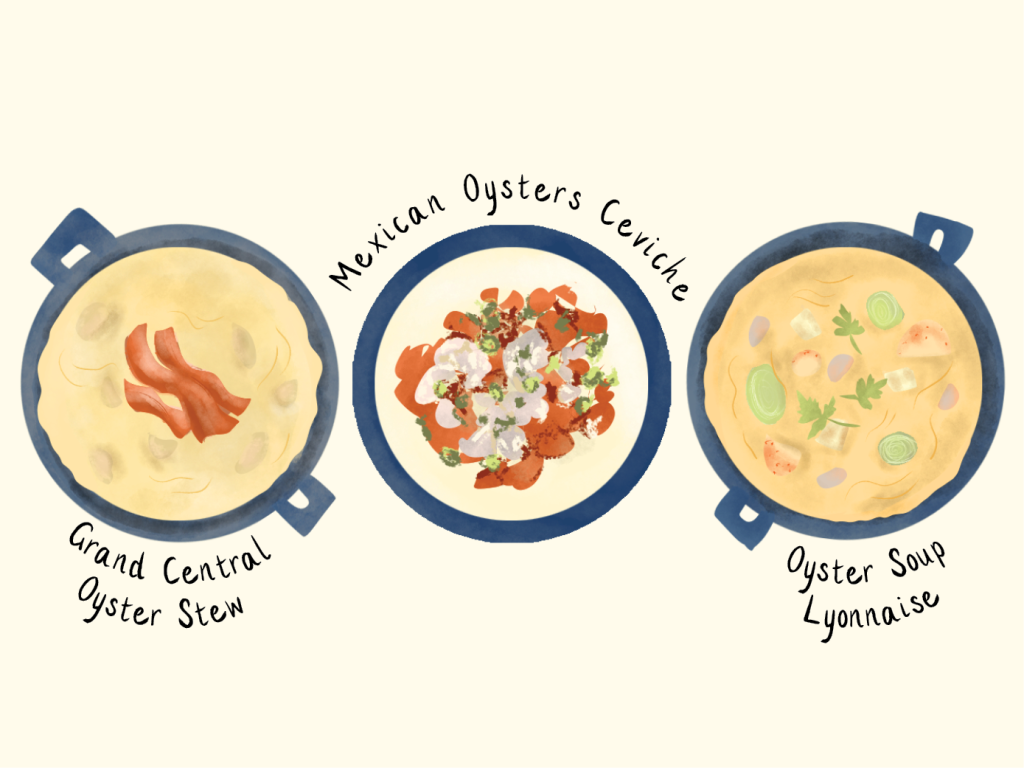
Grand Central Oyster Stew
A dish made famous by the Oyster Bar in Grand Central Station, New York – the oldest restaurant on the concourse.
Ingredients
- 4 dozen oysters
- 6 slices bacon
- 2 tablespoons butter
- 2 cups milk
- 1 shallot, finely chopped
- Salt and pepper (to taste)
Method
- Fry the bacon crisp and crumble it.
- Shuck the oysters (retain the liquor) and put them in a heavy pot with their liquor and the butter.
- Cook for 2-3 minutes (until the oysters curl).
- Add the rest of the ingredients and heat through.
- Serve with crackers.
Mexican Oysters Ceviche
Another from the New World, but further south and this time for those with a more piquant palate.
Ingredients
- 4 dozen oysters
- 3 red onions, chopped
- 1 clove garlic, finely chopped
- 1 carrot, copped and blanched
- 2 cauliflower florets, copped
- Bay leaf, marjoram, oregano, pepper
- Half cup lime juice
- Half cup white wine vinegar
- 6 jalapeno peppers, sliced
Method
- Shuck the oysters and retain the liquor.
- Sauté the onions and garlic until soft.
- Add all the rest of the ingredients and cook until the oysters start to curl.
- Macerate overnight (leave them in the fridge).
- Serve cold.
Oyster Soup Lyonnaise
This, from the Old World, is a creation of the late Lyonais Chef Paul Bocuse, after whom the Bocuse d’Or world chef championship was named.
Ingredients
- 4 dozen oysters
- 3 medium sized leeks, sliced
- 4 russet potatoes, cubed
- 2 slices bread, cubed (for croutons)
- 1 cup double cream
- ¼ teaspoon grated nutmeg
- 100g gruyère cheese (grated)
- 100g fresh parsley, chopped
- Pinch of paprika
Method
- Shuck the oysters and retain the liquor.
- Sweat the leeks in melted butter until soft, then add the potato cubes, cover with water and simmer for 20 minutes.
- Leave to cool.
- When cool, liquidise.
- Add the nutmeg and reheat. Fry the croutons while the soup reheats.
- Add the oysters and liquor and poach until they curl.
- Serve with grated gruyère, parsley and paprika (plus the croutons) and additional cheese according to taste.
Happy shucking!
For those who haven’t tasted oysters before, I hope this will encourage you to try them out. For those who like them already, maybe there are some new ideas here. Enjoy!
